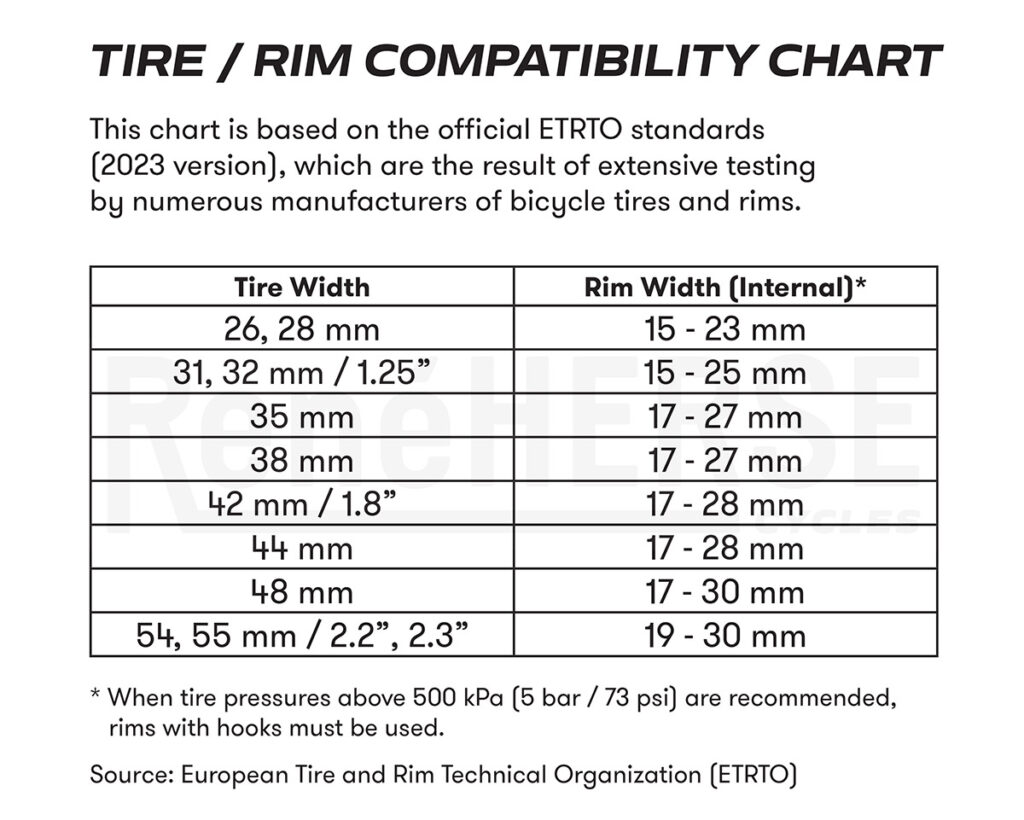from rene hersePlease refer to the
official ETRTO / ISO tire and rim compatibility chart (below). If the rim is too wide, the tire can blow off, because it doesn’t properly engage with the rim’s sidewall.

Narrow tires (≤30 mm): To allow optimizing the aerodynamics of racing bikes, the ETRTO chart is pushing the limits of how wide the rim can be. If all dimensions of your rims are perfectly to spec—usually the case on high-end rims—that’s no problem. If you are running rims that came stock on your bike, it’s safest to keep the rims at least 20% narrower than your tires (≤21 mm rims for 26 mm tires; ≤23 mm rims for 28 mm tires).
You may have heard that matched rim and tire widths make the tire sidewalls more vertical, so they bear more of the bike and rider’s weight. This may work with stiff sidewalls and allows running a lower tire pressure, but also decreases shock absorption and comfort.
With supple tires, almost the entire weight is supported by the air pressure of the tires. Whether the sidewalls are vertical or bulge makes very little difference.